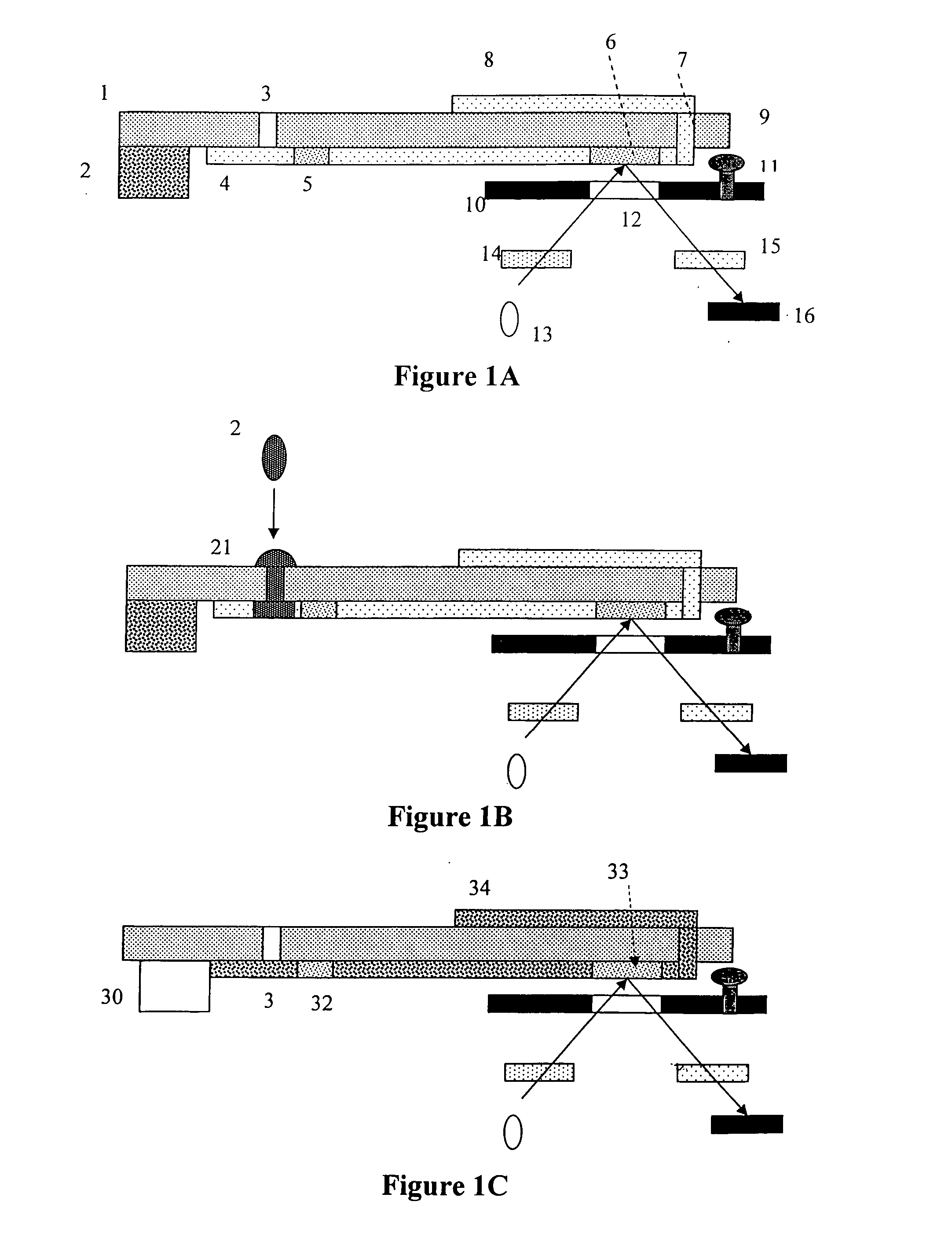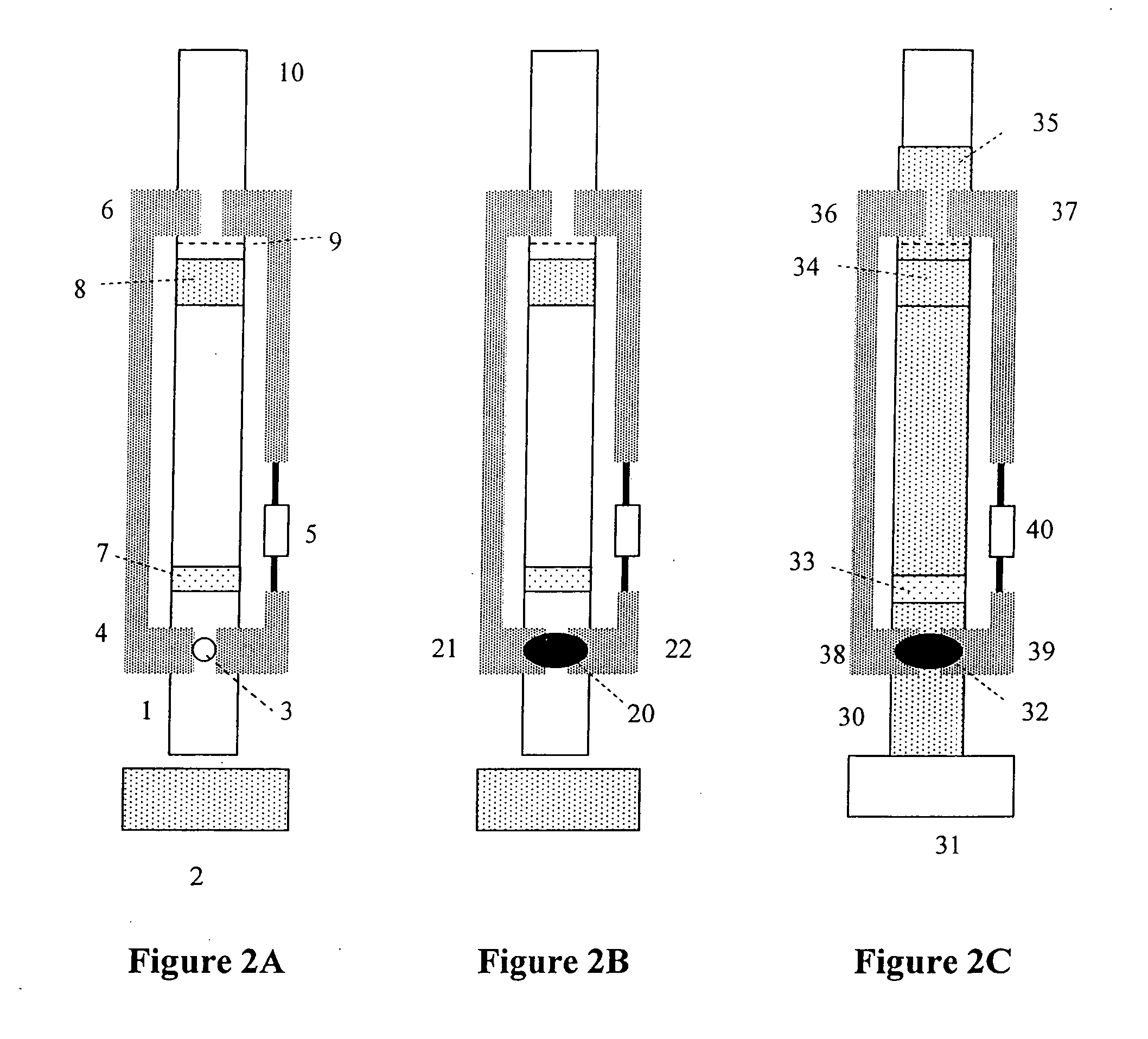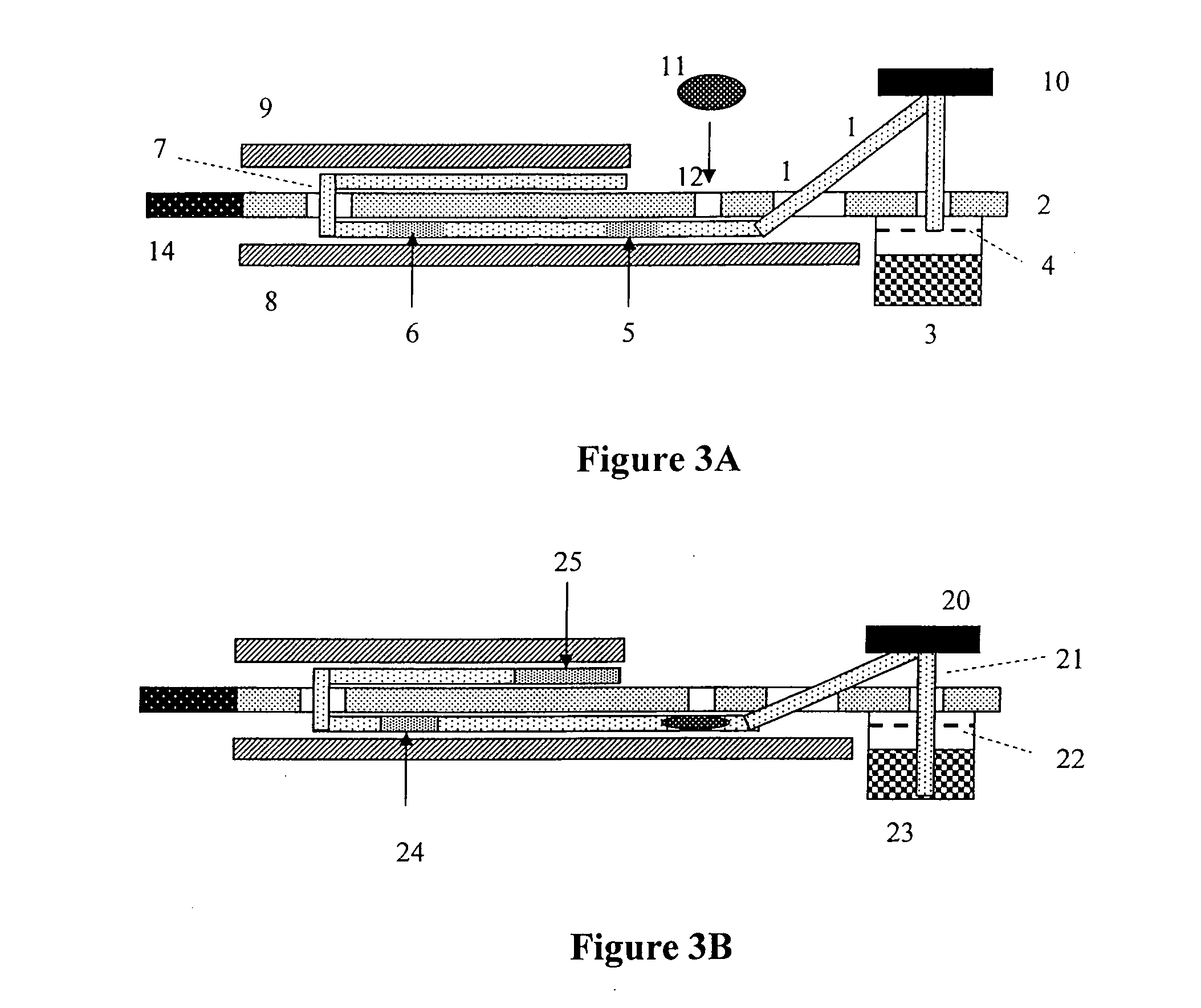Fluorescence lateral flow immunoassay
a technology of immunoassay and fluorescence, which is applied in the field of fluorescence lateral flow immunoassay, can solve the problems of difficult quantification of visual approaches and limit of visual approaches
- Summary
- Abstract
- Description
- Claims
- Application Information
AI Technical Summary
Benefits of technology
Problems solved by technology
Method used
Image
Examples
example 1
Construction of Test Strips
[0167] Prototype test strips were constructed using Fusion 5 membrane (Whatman Corporation), 10-mil thick transparent polycarbonate, 10 ml thick white polystyrene, 415 double-sided adhesive (3M corporation), and 1 mil aluminum foil with an adhesive backing.
[0168] To construct the device, a 5 / 16″ wide×5 1 / 16″ long piece of Fusion 5 membrane was cut. The sample application zone was located ¾″ from one end. A conjugate storage zone was located 1⅜″ away from the same end. The detection zone was a ¼″ wide zone located 2¼″ away from the same end. A fold, used to bend the Fusion 5 in a 180° turn was located 3 / 16 away from this end. The remainder of the Fusion 5 membrane was used as a wick to remove excess buffer and unbound fluorescent detection particles from the observation zone.
[0169] To hold the test strip, white polystyrene was covered with a layer of 415 adhesive. The styrene strip was ¾″ wide, and 3″ long. A ⅜″ wide slot× 1 / 32″ deep was cut in the cente...
example 2
Dye Migration
[0174] In this experiment, 5 microliters of a 1 mg / ml solution of Blue dye #1 in water was applied to the conjugate release zone of the test strip, which is located 1⅜″ away from the end of the strip that protrudes slightly out of the plastic sandwich. The blue dye was applied as a thin strip and allowed to dry. After drying, a solution of buffered 0.9% sodium chloride in water was applied to the end of the strip, and dye migration observed. It was seen that the blue dye migrated up to the fold of the strip, and then went through the slot (disappearing from view through the plastic side), and then migrated to the end of the test strip, migrating as a coherent well-defined colored band during this time. The time elapsed from start to completion was about 4 minutes, and about 1 ml of buffer was consumed during this process.
example 3
Electrical Resistance Tests
[0175] Test strips were made as discussed previously, and placed into the combined fluorescence detection and electrical resistance detection optics block described previously. This optics block measured electrical resistance from about 20,000 ohms to about 800,000 ohms, and presented the results as a digitized 12 bit (0-4095) signal in this region. Studies with application of 10-ul whole blood, as well as application of a buffered 0.9% sodium chloride transport buffer, produced a stair step resistance pattern as exemplified in FIG. 4.
PUM
| Property | Measurement | Unit |
|---|---|---|
| diameter | aaaaa | aaaaa |
| thick | aaaaa | aaaaa |
| thick | aaaaa | aaaaa |
Abstract
Description
Claims
Application Information
 Login to View More
Login to View More - R&D
- Intellectual Property
- Life Sciences
- Materials
- Tech Scout
- Unparalleled Data Quality
- Higher Quality Content
- 60% Fewer Hallucinations
Browse by: Latest US Patents, China's latest patents, Technical Efficacy Thesaurus, Application Domain, Technology Topic, Popular Technical Reports.
© 2025 PatSnap. All rights reserved.Legal|Privacy policy|Modern Slavery Act Transparency Statement|Sitemap|About US| Contact US: help@patsnap.com



